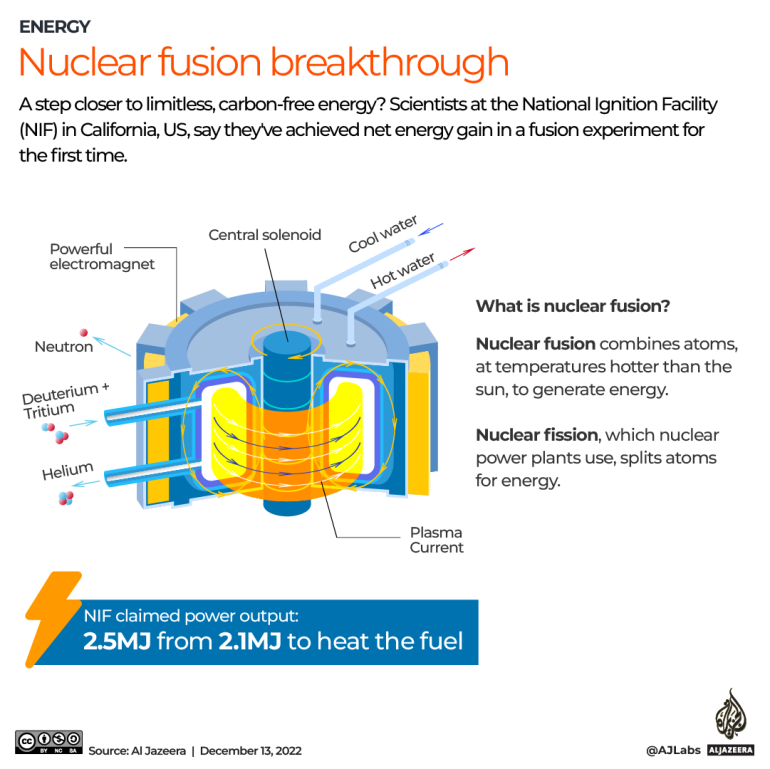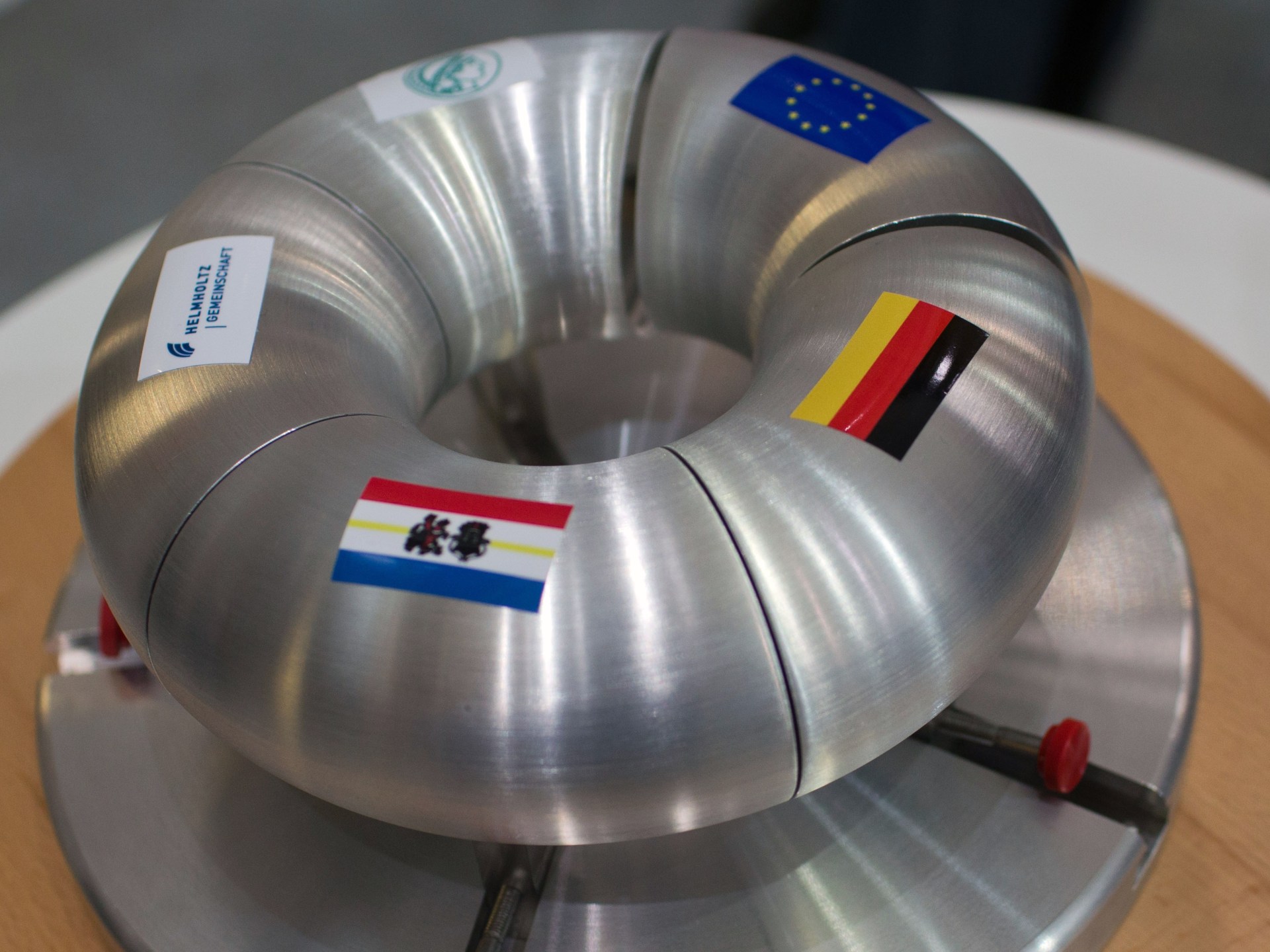Is nuclear fusion a clean-energy planet saviour? | Explainer News
With a ‘major breakthrough’ announcement expected, nuclear fusion harnesses the power of the stars with unlimited clean energy and no dangerous waste.
The US Department of Energy is planning an announcement about a “major scientific breakthrough” at the Lawrence Livermore National Laboratory – one of several sites worldwide where researchers are trying to develop the possibility of harnessing energy from nuclear fusion.
The announcement expected on Tuesday has the scientific community abuzz as nuclear fusion is considered by some to be the energy of the future, particularly as it produces no greenhouse gases, leaves little waste, and has no risk of nuclear accidents.
It also has the potential to one day accelerate the planet’s shift from fossil fuels, which are the major contributors to climate change, but has long struggled with daunting challenges.
Here is a look at what nuclear fusion is and some of the difficulties in turning it into the cheap, carbon-free energy source that scientists believe it can be:
What is nuclear fusion?
Look up and it is happening right above you – nuclear fusion reactions power the sun and other stars.
The reaction happens when two light nuclei merge to form a single heavier nucleus. Because the total mass of that single nucleus is less than the mass of the two original nuclei, the leftover mass is energy that gets released in the process.

In the case of the sun, its intense heat – millions of degrees Celsius – and the pressure exerted by its gravity allow atoms that would otherwise repel each other to fuse.
“We have to find ways to isolate this extremely hot matter from anything that could cool it down. This is the problem of containment,” said Erik Lefebvre, project leader at the French Atomic Energy Commission.
Scientists have long understood how nuclear fusion works and have tried to duplicate the process on Earth as far back as the 1930s. Current efforts focus on fusing a pair of hydrogen isotopes – deuterium and tritium. That particular combination releases “much more energy than most fusion reactions” and requires less heat to do so.
How valuable would this be?
Daniel Kammen, a professor of energy and society at the University of California at Berkeley, said nuclear fusion offers the possibility of “basically unlimited” fuel if the technology can be made commercially viable. The elements needed are available in seawater.
It is also a process that does not produce the radioactive waste of nuclear fission – the technique currently used in nuclear power plants.
“Controlling the power source of the stars is the greatest technological challenge humanity has ever undertaken,” tweeted physicist Arthur Turrell, author of The Star Builders.
How close is it to reality?
Lefebvre cautioned “the road is still very long” before “a demonstration on an industrial scale that is commercially viable”.
He said such a project would take another 20 or 30 years to be completed.
The scientific community is hoping the technology could be a game-changer for global energy production.
“It is an energy source that is totally carbon-free, generates very little waste, and is intrinsically extremely safe,” according to Lefebvre, adding fusion could be “a future solution for the world’s energy problems”.
How are scientists trying to do this?
One way scientists have tried to recreate nuclear fusion involves what is called a tokamak – a doughnut-shaped vacuum chamber that uses powerful magnets to turn fuel into a superheated plasma – between 150 million and 300 million degrees Celsius – where fusion may occur.
The Livermore lab uses a different technique, with researchers firing a 192-beam laser at a small capsule filled with deuterium-tritium fuel. The lab reported an August 2021 test produced 1.35 megajoules of fusion energy – about 70 percent of the energy fired at the target.
The lab said several subsequent experiments showed declining results, but researchers say they identified ways to improve the quality of the fuel capsule and the lasers’ symmetry.
“The most critical feature of moving fusion from theory to commercial reality is getting more energy out than in,” Kammen said.
To get there, researchers must first increase the efficiency of the lasers and reproduce the experiment more frequently.




